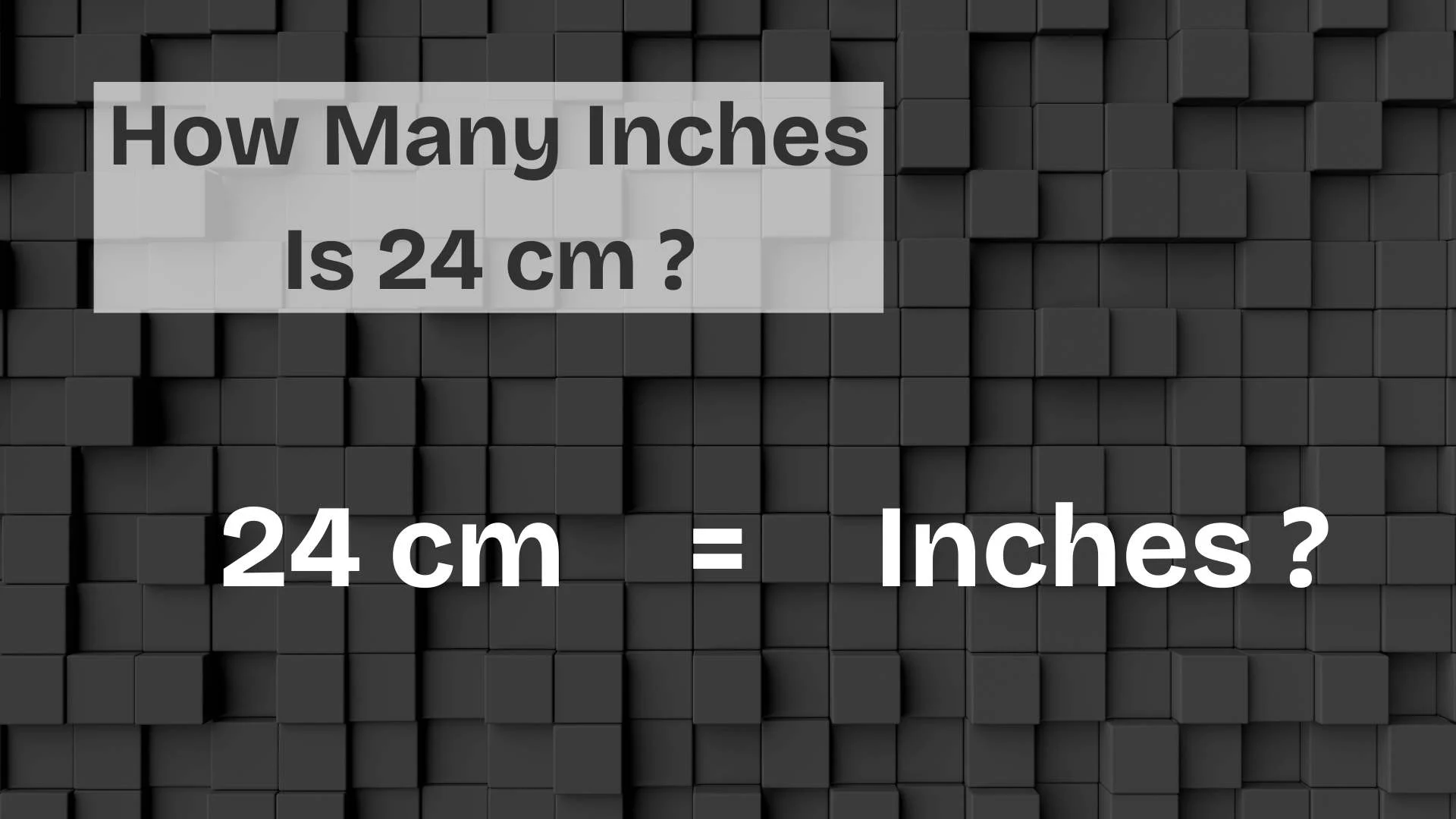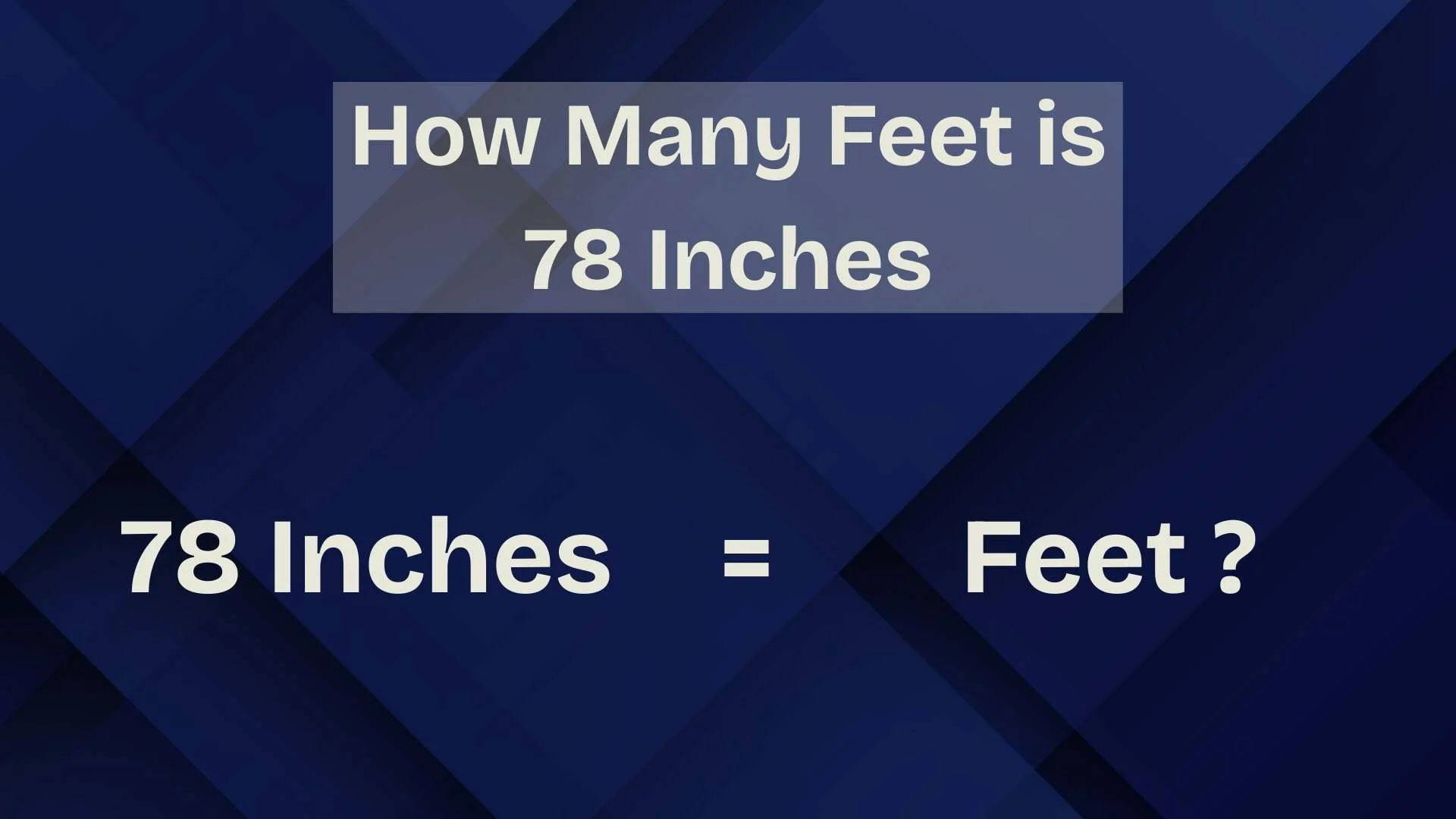If you’ve ever been cooking from an international recipe, working on a sewing project, or checking the size of a product online.
You might have stumbled upon a measurement in centimeters instead of inches.
If you’re more familiar with inches, you may be asking: How many inches is 24 cm?
Don’t worry — this guide will break it down simply, show you the exact conversion, and give you tips to remember it for next time.
Understanding the Two Units | Centimeters & Inches
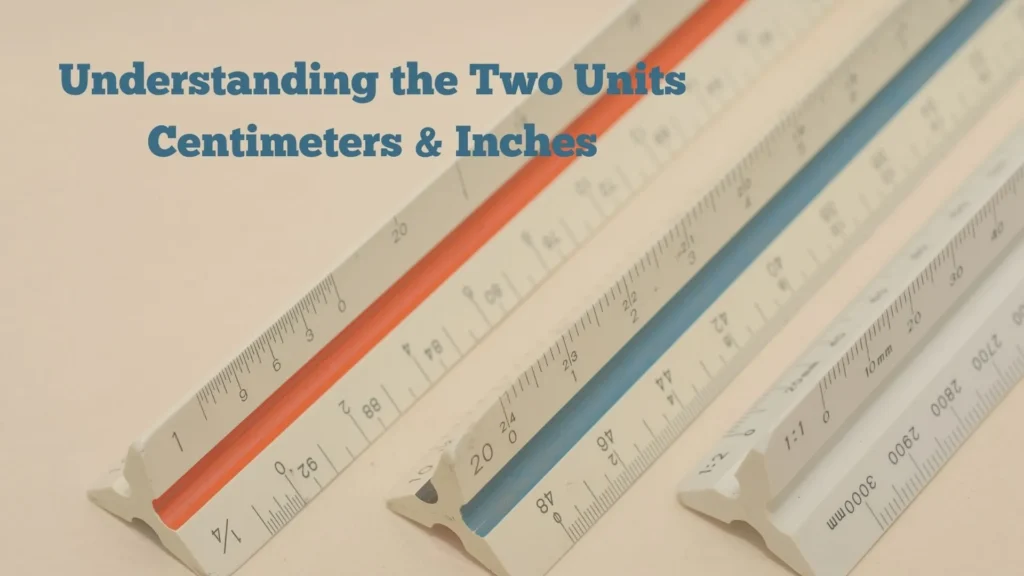
Before we jump into the math, let’s quickly understand what each unit means:
- Centimeter (cm)
- Part of the metric system, used widely around the world.
- 1 centimeter = 0.01 meter.
- Great for precise measurements in science, design, and cooking.
- Part of the metric system, used widely around the world.
- Inch (in)
- Part of the imperial system, mostly used in the US, UK, and a few other countries.
- 1 inch = 2.54 centimeters.
- Commonly used for height, furniture dimensions, and clothing sizes.
- Part of the imperial system, mostly used in the US, UK, and a few other countries.
The Direct Conversion | 24 cm to Inches
Here’s the quick answer:
24 cm = 9.45 inches (rounded to two decimal places).
Formula:
Inches = Centimeters ÷ 2.54
Inches = 24 ÷ 2.54 = 9.4488 inches
Quick Conversion Chart
| Centimeters (cm) | Inches (in) |
| 10 cm | 3.94 in |
| 15 cm | 5.91 in |
| 20 cm | 7.87 in |
| 24 cm | 9.45 in |
| 25 cm | 9.84 in |
| 30 cm | 11.81 in |
Why This Conversion Matters in Real Life
Understanding this conversion is useful in everyday scenarios:
- Cooking & Baking – Some kitchen tools or cake pan sizes are listed in cm, others in inches.
- Shopping Online – International product descriptions often list sizes in metric.
- DIY & Crafts – Sewing patterns and art supplies may use centimeters, but rulers in the US show inches.
- Home Improvement – Measuring spaces for furniture or décor.
How to Easily Remember the Conversion
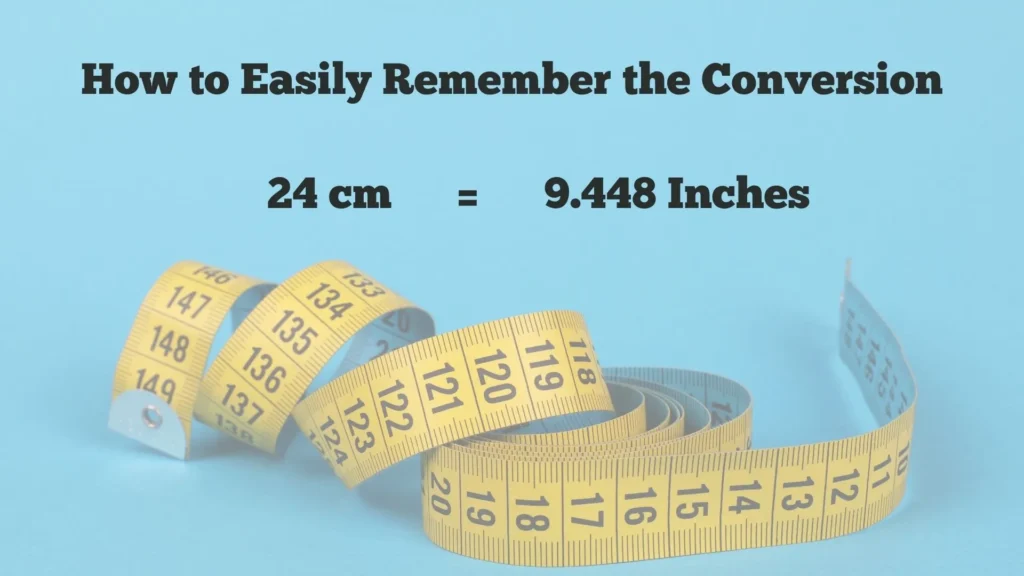
Here’s a quick memory trick:
- “Divide by 2.5” Rule – Since 1 inch is about 2.54 cm, dividing centimeters by 2.5 gives you a close inch value.
- Example: 24 ÷ 2.5 ≈ 9.6 inches (slightly over, but easy to remember without a calculator).
Common Mistakes & Tips for Accurate Measuring
Mistakes to Avoid:
- Confusing cm with mm (millimeters are much smaller).
- Rounding too early in the calculation.
- Forgetting that the conversion factor is 2.54, not 2.5 exactly.
Tips:
- Always double-check your math when precision matters (e.g., sewing, engineering).
- Use an online converter for quick checks.
Measurement Difference | Why It’s Not Exact Every Time
When you round numbers, you slightly change the measurement. For example:
- Exact value of 24 cm in inches: 9.4488 in
- Rounded to 2 decimals: 9.45 in
This small difference usually doesn’t matter for everyday tasks, but it can for technical work.
Real Life Examples of 24 cm in Inches
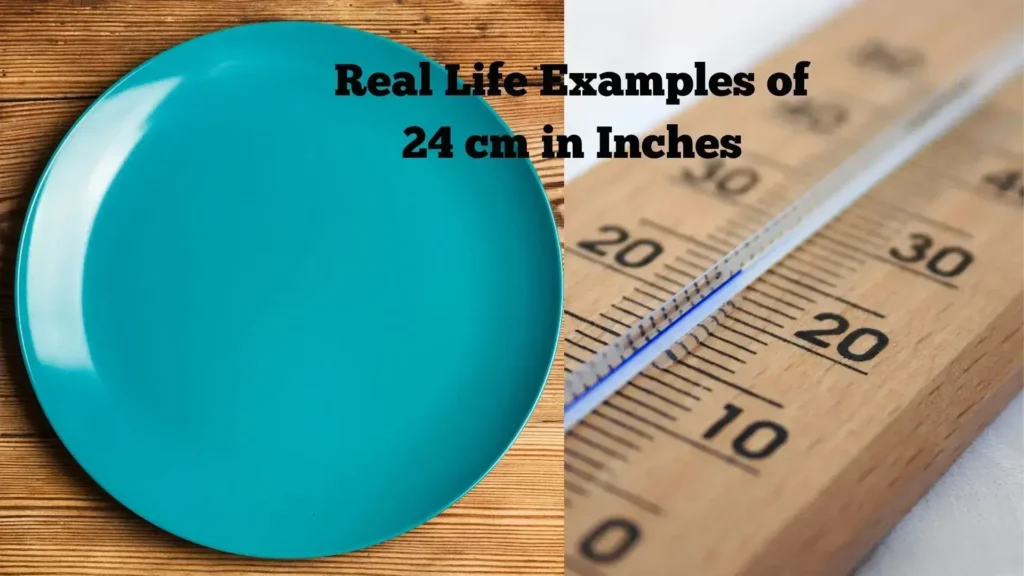
To give you an idea:
- A dinner plate diameter – about 24 cm or 9.45 inches.
- A standard tablet – many are close to 24 cm tall.
- A ruler plus a third – since a standard ruler is 12 inches, 24 cm is about 3 inches shorter.
Frequently Asked Questions (FAQ)
1. Is 24 cm the same as 10 inches?
No, 24 cm is slightly less — it’s about 9.45 inches.
2. How do I quickly convert cm to inches without a calculator?
Divide the cm value by 2.5 for a close estimate.
3. Why is 1 inch exactly 2.54 cm?
It’s a standardized international agreement for measurement accuracy.
4. Is 24 cm a common size?
Yes, it’s common for plates, small cutting boards, and tech devices.
5. Do I need to be exact in conversions for cooking?
Usually, small differences don’t affect recipes, but precision helps in baking.
6. Can I measure 24 cm with a standard 12-inch ruler?
Yes, but it will extend a bit beyond the 9-inch mark.
Conclusion
Now you know — 24 cm is 9.45 inches, and with the divide-by-2.5 trick, you’ll remember it easily. Whether for cooking, shopping, or crafting, this simple conversion will save you time and confusion.

Henry Miles is a seasoned writer and content strategist with over a decade of experience in crafting engaging digital content. With a background in communication and media studies, he brings a deep understanding of audience psychology, storytelling, and online trends. His work often bridges the gap between informative clarity and creative expression, making complex topics accessible and enjoyable for readers of all backgrounds.
Known for his disciplined research and clean writing style, Henry has contributed to numerous blogs, educational platforms, and professional publications. When he’s not writing, he’s usually found exploring new literary techniques or mentoring aspiring content creators.
Henry is also the author of several well-received titles, including The Digital Mindset, Words That Connect, and Content Beyond Clicks—books that continue to inspire writers and marketers around the globe.

